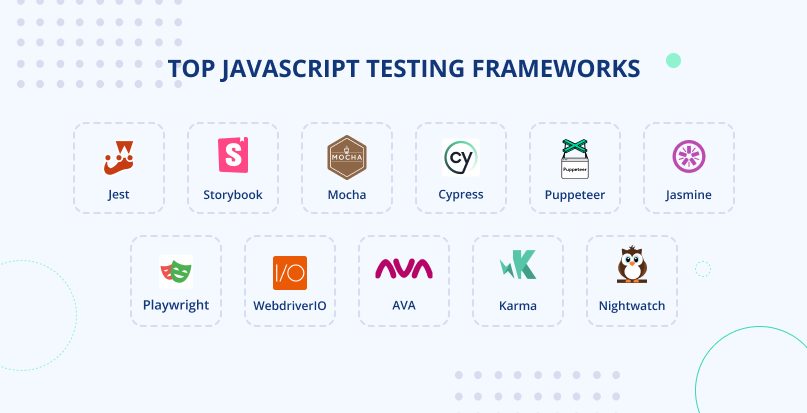
Mastering JavaScript Testing with Jest: A Comprehensive Guide for 2024
The Developer’s Safety Net: An Introduction to Jest Testing
In the world of modern JavaScript development, writing code is only half the battle. Building robust, scalable, and maintainable applications requires a commitment to quality, and the cornerstone of that commitment is testing. Without a solid testing strategy, every new feature or bug fix carries the risk of silently breaking something else. This is where Jest, a “delightful” JavaScript testing framework, comes in. Maintained by Meta, Jest has become the de facto standard for JavaScript Testing due to its zero-configuration setup, powerful feature set, and exceptional developer experience.
Jest provides an integrated “all-in-one” solution, including a test runner, assertion library, and built-in mocking capabilities. This means you can get started writing meaningful tests in minutes without the hassle of piecing together multiple tools. Whether you’re working on a simple utility library, a complex Node.js JavaScript backend with Express.js, or a dynamic frontend application using frameworks like React, Vue, or Svelte, Jest provides the tools you need to ensure your code behaves exactly as you expect. This article offers a comprehensive deep dive into Jest Testing, from fundamental concepts and practical examples to advanced techniques and best practices that will elevate your Modern JavaScript projects.
Getting Started with Jest: Core Concepts and Setup
Jumping into Jest is remarkably straightforward. Its philosophy of providing sensible defaults allows developers to focus on writing tests rather than wrestling with configuration. Let’s walk through setting up a project and writing our first test.
Setting Up Your First Jest Project
To begin, you’ll need a Node.js project. If you’re starting from scratch, you can initialize one quickly.
1. Initialize your project: Open your terminal in a new project folder and run npm init -y. This creates a `package.json` file.
2. Install Jest: Add Jest as a development dependency using your preferred package manager (NPM, Yarn, or pnpm):
npm install --save-dev jest3. Configure the Test Script: Open your `package.json` file and modify the `scripts` section to include a command for running Jest:
{
"scripts": {
"test": "jest"
}
}With this setup, you can now run all your project’s tests by simply executing npm test in your terminal.
The Anatomy of a Jest Test
A typical Jest test file (e.g., `myFunction.test.js`) is structured around a few key global functions:
describe(name, fn): This function creates a block that groups together several related tests, often referred to as a “test suite.” It helps organize your tests, especially in larger files.test(name, fn)orit(name, fn): This is where you define an individual test case. The first argument is a string that describes what the test is checking, and the second is a function containing the test’s logic.expect(value): This is the heart of any test. Theexpectfunction is used to create an “assertion.” When you chain it with a “matcher” function (like.toBe()), you are stating an expectation about your code’s behavior. If the expectation isn’t met, the test fails.
Let’s see this in action with a basic example. Imagine we have a simple utility module for math operations.
`math.js`

// Using ES Modules for modern JavaScript
const add = (a, b) => a + b;
const subtract = (a, b) => a - b;
export { add, subtract };`math.test.js`
import { add, subtract } from './math';
describe('Math Utility Functions', () => {
// Test for the add function
test('should return the sum of two positive numbers', () => {
expect(add(2, 3)).toBe(5);
});
test('should return the sum when one number is negative', () => {
expect(add(-5, 10)).toBe(5);
});
// Test for the subtract function
test('should return the difference of two numbers', () => {
expect(subtract(10, 4)).toBe(6);
});
});In this example, we use describe to group our math tests. Each test function defines a specific scenario, and expect(...).toBe(...) asserts that the actual output matches the expected output. The .toBe() matcher uses strict equality (===), making it ideal for primitive values like numbers and strings.
Practical Implementation: Testing Asynchronous Code and Mocks
Modern web applications are inherently asynchronous. Whether you’re fetching data from a REST API JavaScript endpoint, querying a database in a JavaScript Backend, or handling user input, you’ll be working with asynchronous operations. Jest provides excellent, built-in support for testing this type of code.
Handling Asynchronous Operations
Testing JavaScript Async code requires telling Jest when the operation has completed. The most common and readable way to do this is with the Async Await syntax, a cornerstone of JavaScript ES6 and beyond.
Imagine a function that fetches user data from an API. We can’t test it synchronously because the network request takes time.
`api.js`
import fetch from 'node-fetch'; // Assuming a Node.js environment
export const fetchUserProfile = async (userId) => {
if (!userId) {
throw new Error('User ID is required');
}
const response = await fetch(`https://api.example.com/users/${userId}`);
if (!response.ok) {
throw new Error('Failed to fetch user');
}
const data = await response.json();
return data;
};To test this, we can use Jest’s .resolves and .rejects matchers along with async/await in our test function.
`api.test.js`
import { fetchUserProfile } from './api';
import fetch from 'node-fetch';
// Mock the node-fetch module
jest.mock('node-fetch');
const { Response } = jest.requireActual('node-fetch');
describe('fetchUserProfile', () => {
test('should fetch and return a user profile successfully', async () => {
const mockUser = { id: 1, name: 'John Doe' };
// Configure the mock fetch to return a successful response
fetch.mockReturnValue(Promise.resolve(new Response(JSON.stringify(mockUser))));
// Use .resolves to handle the resolved promise
await expect(fetchUserProfile(1)).resolves.toEqual(mockUser);
});
test('should throw an error if the user ID is not provided', async () => {
// Use .rejects to handle a rejected promise or thrown error
await expect(fetchUserProfile(null)).rejects.toThrow('User ID is required');
});
test('should throw an error if the network request fails', async () => {
// Configure the mock fetch to return a failed response
fetch.mockReturnValue(Promise.resolve(new Response('Not Found', { status: 404 })));
await expect(fetchUserProfile(999)).rejects.toThrow('Failed to fetch user');
});
});Notice how we marked the test function with async and used await before the expect call. This ensures Jest waits for the promise to settle before moving on. We also introduced mocking to avoid making actual network requests, which leads us to our next topic.
The Power of Mocking
Unit tests should be fast, reliable, and isolated. This means a test for one function shouldn’t depend on the behavior of another function, an external API, or a database. Mocking is the technique of replacing these dependencies with “fake” versions that you can control. Jest’s built-in mocking capabilities are a major strength.
You can create a simple mock function with jest.fn(). This creates a “spy” that records how it’s being used—how many times it was called, and with what arguments.
Advanced Jest Techniques for Robust Applications
Once you’ve mastered the basics, Jest offers a suite of advanced features to handle more complex scenarios, such as testing UI components and managing large-scale test suites.

Testing React Components
While Jest is a generic JavaScript Testing framework, it’s the dominant choice in the React ecosystem. When paired with the React Testing Library (`@testing-library/react`), it provides a powerful, user-centric way to test components. The philosophy is to test components the way users interact with them, by querying the JavaScript DOM and simulating JavaScript Events.
Here’s a simple example of testing a counter component. This approach is fundamental to any good React Tutorial on testing.
`Counter.js` (A React Component)
import React, { useState } from 'react';
export function Counter() {
const [count, setCount] = useState(0);
return (
<div>
<p>Count: {count}</p>
<button onClick={() => setCount(count + 1)}>Increment</button>
</div>
);
}`Counter.test.js`
import React from 'react';
import { render, screen, fireEvent } from '@testing-library/react';
import '@testing-library/jest-dom'; // for extra matchers
import { Counter } from './Counter';
describe('Counter Component', () => {
test('should render with an initial count of 0', () => {
render(<Counter />);
// Use screen queries to find elements a user would see
expect(screen.getByText('Count: 0')).toBeInTheDocument();
});
test('should increment the count when the button is clicked', () => {
render(<Counter />);
// Find the button
const incrementButton = screen.getByRole('button', { name: /increment/i });
// Simulate a user click event
fireEvent.click(incrementButton);
// Assert that the DOM has updated correctly
expect(screen.getByText('Count: 1')).toBeInTheDocument();
});
});Snapshot Testing
Snapshot testing is a unique feature of Jest. It’s useful for ensuring that your UI or large JavaScript Objects don’t change unexpectedly. The first time a snapshot test runs, Jest creates a “snapshot” file that stores the rendered output. On subsequent runs, Jest compares the new output to the saved snapshot. If they don’t match, the test fails, alerting you to a potential unintended change.
To create a snapshot test, you use the .toMatchSnapshot() matcher.

import renderer from 'react-test-renderer';
import { Counter } from './Counter';
test('Counter component renders correctly', () => {
const tree = renderer.create(<Counter />).toJSON();
expect(tree).toMatchSnapshot();
});While powerful, snapshots should be used judiciously. They can become brittle if the component changes frequently, leading to developers blindly updating them without verifying the changes.
Best Practices and Workflow Optimization
Writing tests is one thing; writing good, maintainable tests is another. Following established best practices ensures your test suite remains a valuable asset rather than a maintenance burden.
Writing Clean and Maintainable Tests
- Arrange, Act, Assert (AAA): Structure your tests clearly. First, arrange your test data and mocks. Second, act by calling the function or simulating the event. Finally, assert that the outcome is what you expected. This pattern makes tests easy to read and debug.
- Be Descriptive: Your test names should clearly state what is being tested and what the expected outcome is. A failing test named `it(‘should throw an error if the password is too short’)` is much more informative than `it(‘handles errors’)`. This is a core tenet of Clean Code JavaScript.
- Keep Tests Independent: Each test should run in isolation and not depend on the state or outcome of another test. Use setup and teardown functions like
beforeEachandafterEachto reset state between tests. - Test Behavior, Not Implementation: Focus your tests on the public API or the user-facing behavior of your code. Testing internal implementation details makes your tests brittle, as they will break even during simple refactors that don’t change the external behavior.
Integrating Jest into Your Workflow
To get the most out of Jest, integrate it into your daily development process. Use Jest’s “watch mode” by running npm test -- --watch. This will automatically re-run tests related to the files you’ve changed, providing an incredibly fast feedback loop. Furthermore, for any serious Full Stack JavaScript project, integrating your test suite into a CI/CD pipeline (like GitHub Actions) is crucial. This ensures that no code that breaks existing functionality can be merged into your main branch, safeguarding your application’s quality.
Conclusion: Building Confidence with Jest
In the fast-paced landscape of web development, Jest Testing provides a critical safety net, giving developers the confidence to refactor code, add new features, and build complex applications without fear. We’ve journeyed from the JavaScript Basics of setting up Jest to advanced techniques like mocking asynchronous API calls and testing React components. We’ve also explored the JavaScript Best Practices that transform a test suite from a simple checklist into a robust, maintainable, and invaluable part of your development lifecycle.
The key takeaway is that testing is not an afterthought; it is an integral part of professional software development. By embracing tools like Jest, you are investing in the long-term health, stability, and quality of your codebase. The next step is to start small: pick a critical utility function in your project, write your first test, and experience the confidence it brings. From there, you can expand your coverage and make testing a natural part of your workflow.



